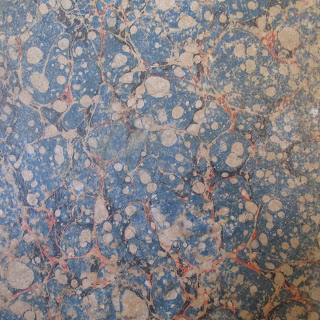POPULAR PRINTED MUSIC was usually sold in the 19th century in the form of a few pages of sheet music with attractive artwork on the cover or title page. The latest songs and dances were proudly exhibited in Malta's music shop windows of the time in order to attract customers. The invention of the upright piano made this instrument far more affordable to a larger public so that much of this sheet music was composed or transcribed for pianists. Owners of this flimsy sheet music sometimes chose to bind together several of their favourite pieces in order to preserve them. The binding was done locally.
BINDING: There are some beautiful bindings having leather spines with gold lettering and tooling. Often the owner's name is also fixed on a leather label with decorative gold edging on the front cover. This all shows the importance that was given to sheet music and also the prestige of ownership.
Gold tooling on leather spine of bound 19th century Music. ABC Collection
Music of the 19th century was not printed on standard sized paper or in standard format. Paper could be large or smaller, horizontal or upright. The binder always preferred neatness. This meant that during binding very often the larger formats suffered cropping in order to conform with the smaller sizes. This produced some very unfortunate results such as missing titles, missing composer's name or publisher, and also cropped hand written dedications.
A Piece of music by Dr Paolo Nani, printed by the Brocktorffs, suffered cropping in binding. The handwritten dedication by Nani is also cropped.











